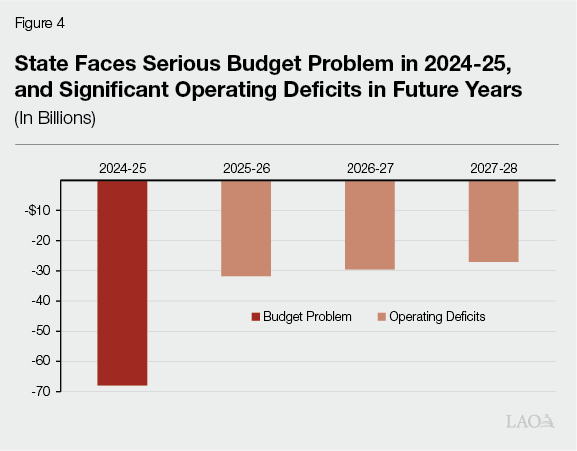Sacramento, CA…California Faces a $68 Billion Deficit. Largely as a result of a severe revenue decline in 2022‑23, the state faces a serious budget deficit. Specifically, under the state’s current law and policy, we estimate the Legislature will need to solve a budget problem of $68 billion in the upcoming budget process.
Unprecedented Prior‑Year Revenue Shortfall Creates Unique Challenges. Typically, the budget process does not involve large changes in revenue in the prior year (in this case, 2022‑23). This is because prior‑year taxes usually have been filed and associated revenues collected. Due to the state conforming to federal tax filing extensions, however, the Legislature is gaining a complete picture of 2022‑23 tax collections after the fiscal year has already ended. Specifically, we estimate that 2022‑23 revenue will be $26 billion below budget act estimates. This creates unique and difficult challenges—including limiting the Legislature’s options for addressing the budget problem.
Legislature Has Multiple Tools Available to Address Budget Problem. While addressing a deficit of this scope will be challenging, the Legislature has a number of options available to do so. In particular, the state has nearly $24 billion in reserves to address the budget problem. In addition, there are options to reduce spending on schools and community colleges that could address nearly $17 billion of the budget problem. Further adjustments to other areas of the budget, such as reductions to one‑time spending, could address at least an additional $10 billion or so. These options and some others, like cost shifts, would allow the Legislature to solve most of the deficit largely without impacting the state’s core ongoing service level.
Legislature Will Have Fewer Options to Address Multiyear Deficits in the Coming Years. Given the state faces a serious budget problem, using general purpose reserves this year is merited. That said, we suggest the Legislature exercise some caution when deploying tools like reserves and cost shifts. The state’s reserves are unlikely to be sufficient to cover the state’s multiyear deficits—which average $30 billion per year under our estimates. These deficits likely necessitate ongoing spending reductions, revenue increases, or both. As a result, preserving a substantial portion—potentially up to half—of reserves would provide a helpful cushion in light of the anticipated shortfalls that lie ahead.



